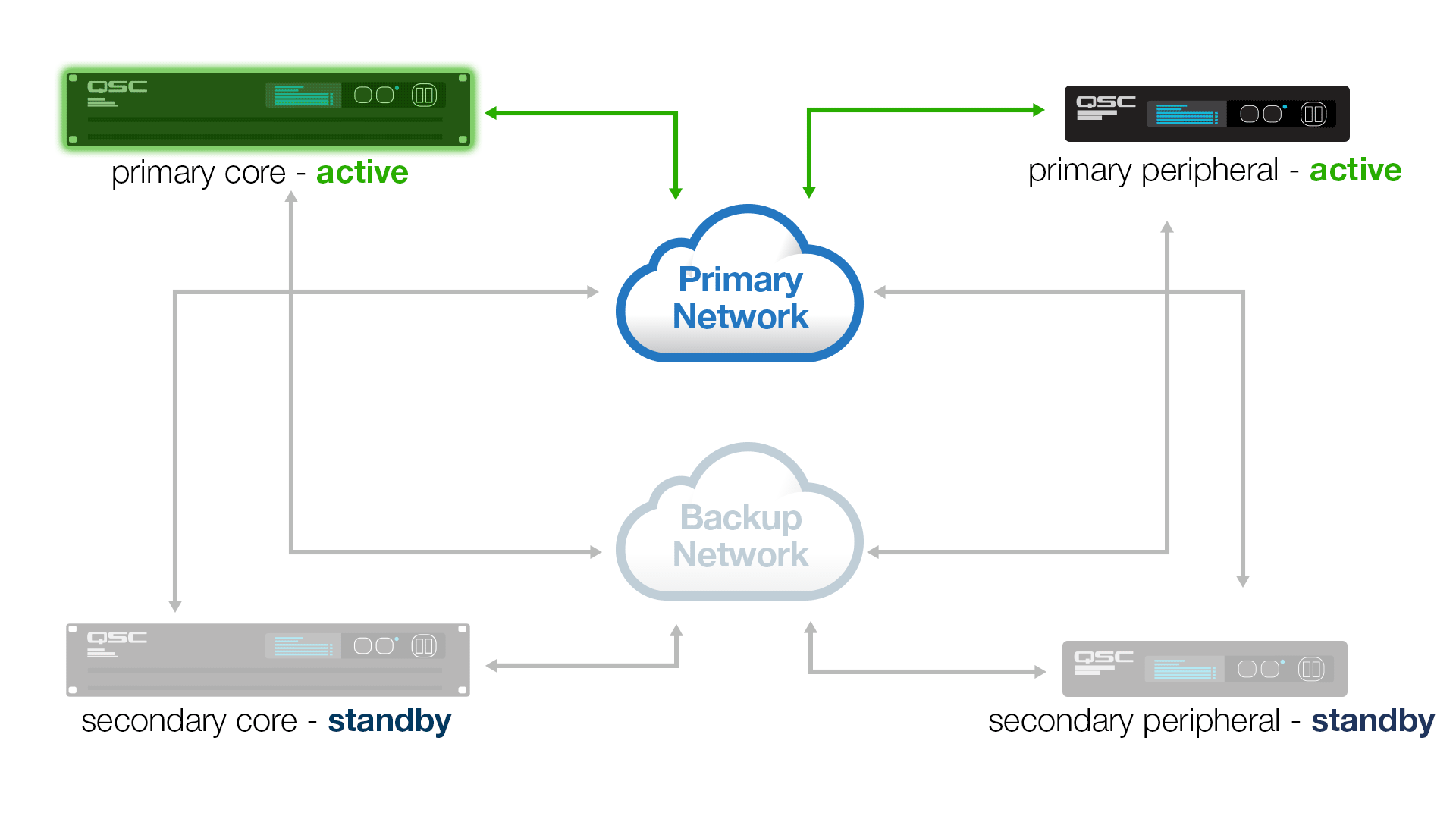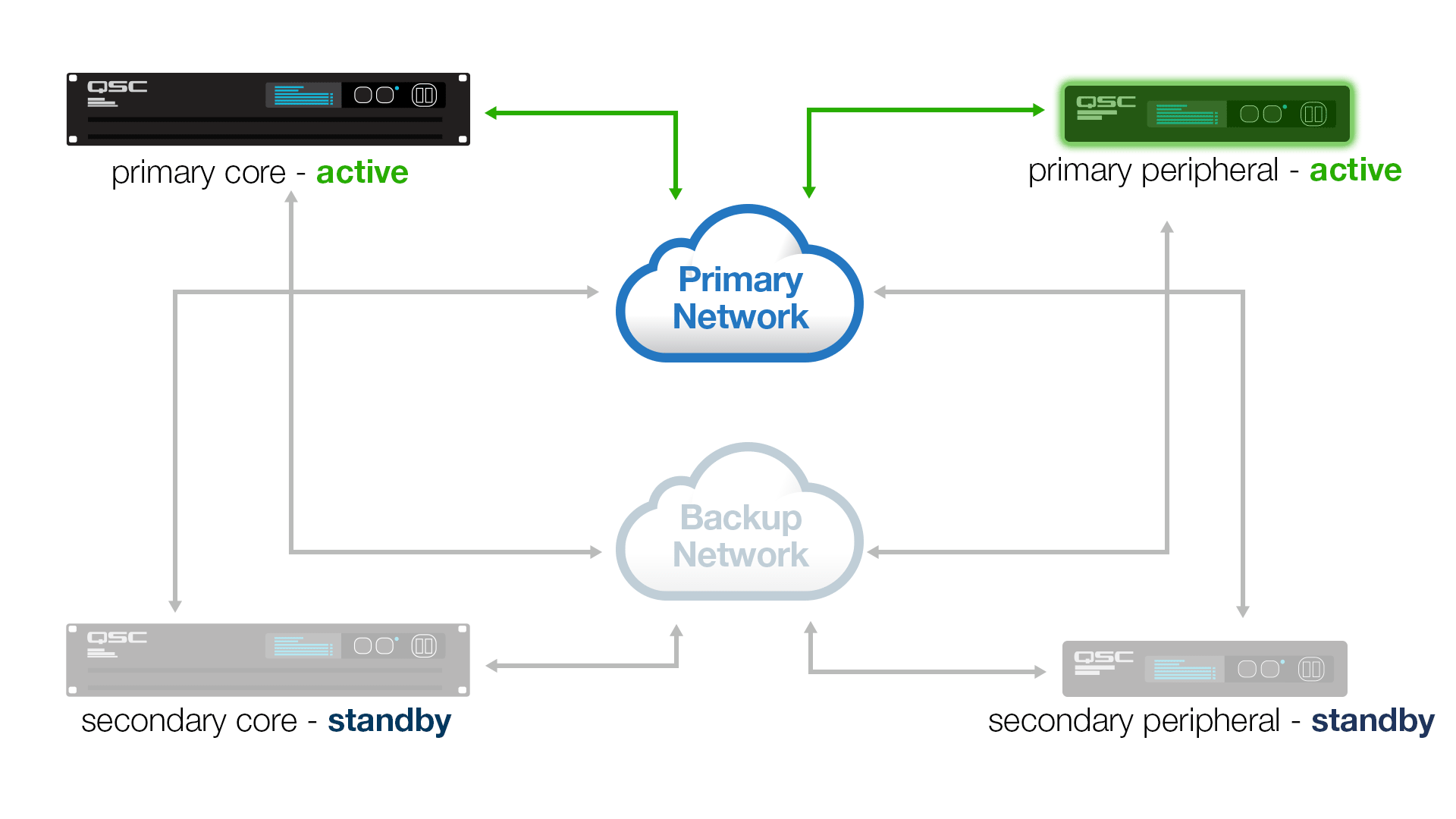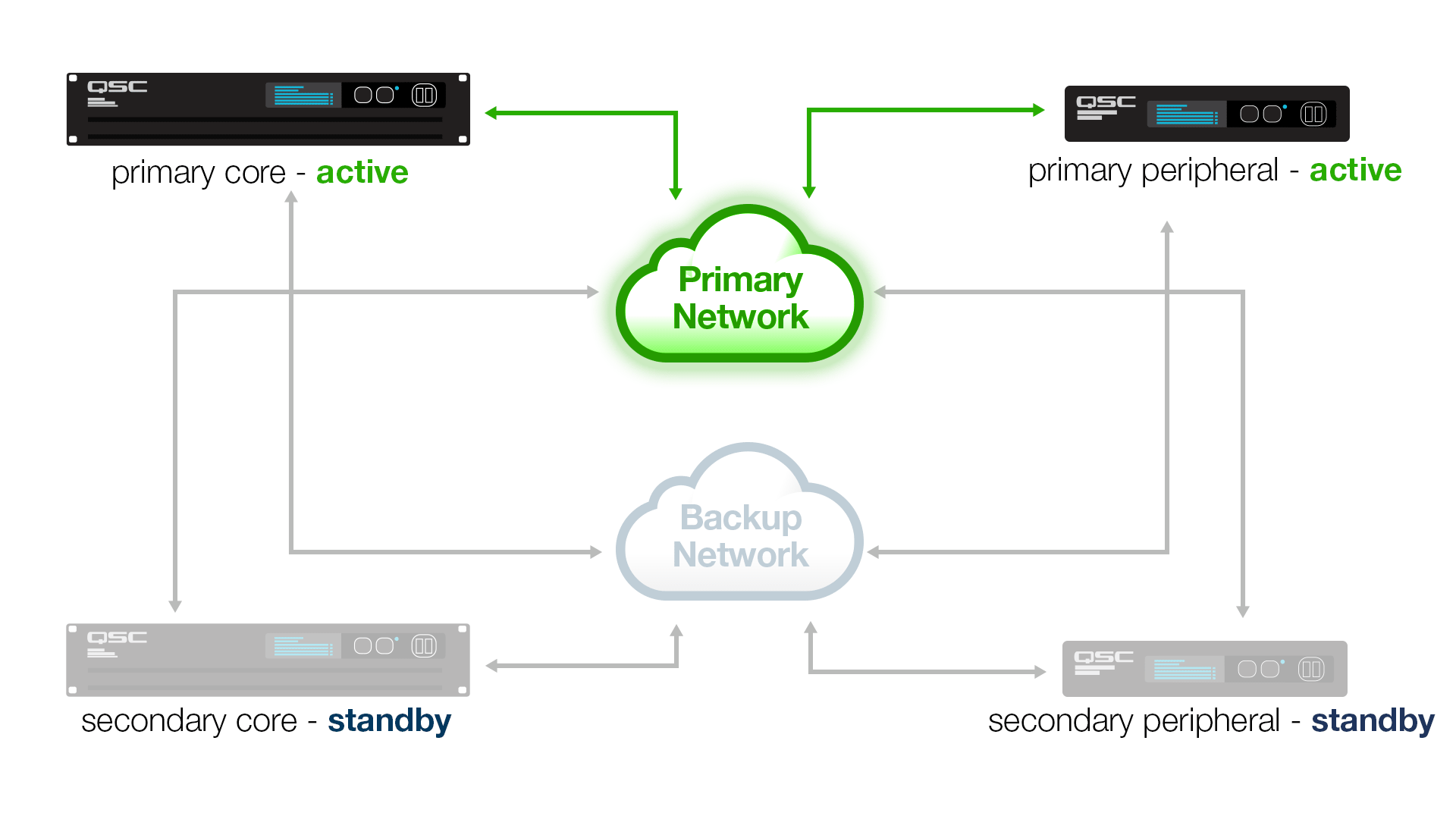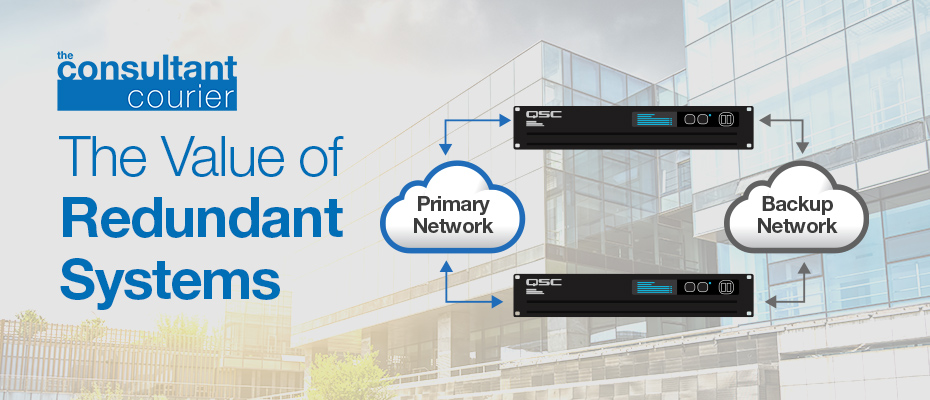From the Department of Redundant Systems ….
With the move to more IT-centric designs, we often find Q-SYS being implemented in a “centralized” configuration, which a single Q-SYS Core processor serves multiple rooms. The obvious upside to this design philosophy is a decrease in total cost of ownership (TCO) to your users.
Reduced hardware in a centralized system means a reduced cost of entry for the user’s AV systems. The downside … a device outage now has greater implications. Instead of just a single system going offline, now any outages are multiplied throughout the entire centralized system (rooms, floors, campuses). To mitigate this potential risk, QSC offers the most comprehensive portfolio of redundancy options on the market today.
From a designer’s perspective, redundancy can:
- Decrease potential risk in designing a centralized system
- Increase system(s) uptime, decrease downtime
- Offer a reduction in TCO to your user
- Ensure reliability at the Core and peripheral
Hardware Redundancy
There are couple key technological factors that lead us to our redundancy capabilities. First, the Q-SYS architecture is built around the concept of a Core/Peripheral relationship. The primary Core processor for the system plays host to the peripherals connected via the network. Next, the presence of dual LAN Ports on all Cores as well as nearly every modern Q-SYS native peripheral allows for robust hardware redundancy options.
Enabling Core redundancy in Q-SYS Designer Software is as easy as selecting “yes” in the “is Redundant” properties field, and naming its redundant backup device. This is true for all of our Core models – from the Q-SYS Core Nano to the Q-SYS Core 5200.

Core Redundancy

The same election process happens for peripheral devices. Now, if the “IO-8 Flex-1” loses connection to the Core then the “IO-8-Flex-2” will automatically take over.

Peripheral Redundancy

Network Redundancy
You may have noticed the “Is Network Redundant” field in that last screenshot. Each audio peripheral can be configured in Q-SYS Designer Software to use LAN B as a backup (Is Network Redundant checked “yes”). For each audio peripheral that “Is Network Redundant”, the Core establishes redundant audio streams to and from that peripheral.
These streams are always active, allowing the Core and peripherals to use audio streams from LAN B if there is a problem with LAN A. If a port, switch, or link is lost, there is no failover time, and no interruption of the audio stream.
Network Redundancy

Keep in mind that since Q-SYS offers AEC (acoustic echo cancellation) as a function of software, and we can redundantly process the entire digital signal path. This is particularly important in large centralized deployments where Q-SYS is supporting multiple meeting spaces, i.e convention center, conference center, or corporate campus.
Anywhere your customer needs high availability systems designed, QSC can help. From processing and amplification to peripheral and network redundancy, Q-SYS has you covered!!!
For more information you can watch the quick video below, or contact me at [email protected]. Thanks for tuning in, and let us know how we can help support your next project!
Jake Corlett
Latest posts by Jake Corlett (see all)
- Consultant Courier: The Value of Redundant Systems - January 26, 2021
- Consultant Courier: Dynamic Pairing is Awesome! - August 27, 2020
- Consultant Courier: Intrinsic Correction - June 5, 2020

Buckwheat! You have done well, grasshopper. I hope the family is well during these crazy times.